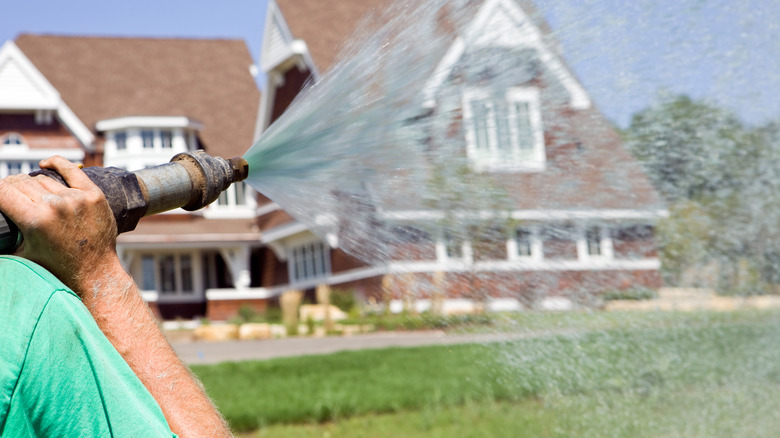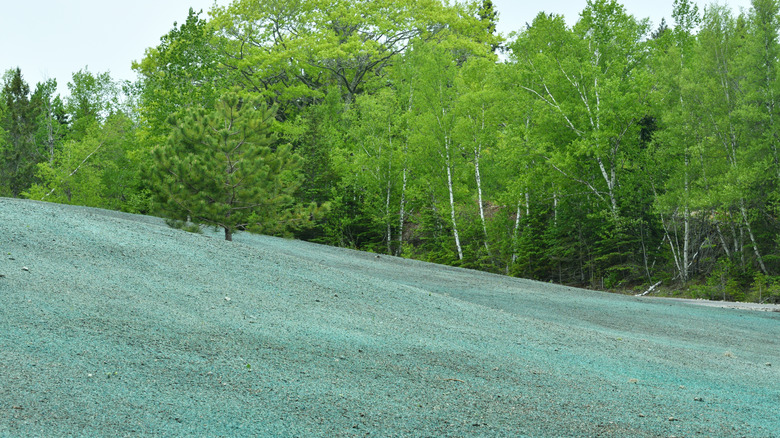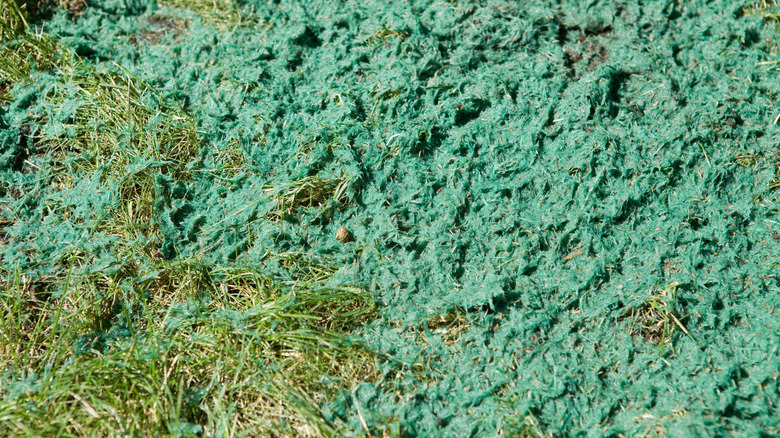What Is Hydroseeding And How Can It Benefit Your Lawn?
Hydroseeding, sometimes called hydraulic mulch seeding or hydro-mulching, is used to establish new lawns or rehabilitate existing ones. A specialized tank is used to mix grass seed, mulch, fertilizer, and other additives with water before spraying it onto the desired area. The process results in a uniformly distributed slurry. With this technique, grass growth is expedited, leading to a quicker and more consistent development of the lawn compared to conventional seeding methods.
This method creates an ideal environment for germination and root development to be established, resulting in a stronger and healthier lawn. The seed mixture can be customized, allowing for the selection of seed varieties that are well-suited to the local climate, soil conditions, and intended use of the area. It is also a reliable technique to control soil erosion, which is particularly advantageous for sloped yards or vulnerable areas prone to runoff. In addition, herbicides are often used in the mixture, suppressing weed growth and reducing resource competition.
Application technique
Establishing a lawn through hydroseeding requires a meticulous process and application to guarantee its success. The first step is soil testing to assess its composition and nutrient levels. Based on the results, any necessary soil amendments and pH adjustments are made to create an optimal environment for seed growth. Next, existing grass or debris is removed from the area to provide a clean slate. This helps prevent competition and allows the new grass seeds to thrive.
After completing the preparation process, the custom mixture of grass seeds, mulch, fertilizers, and other additives is combined with water to form a slurry. Next, the mixture is evenly sprayed onto the prepared lawn area. This spraying mechanism ensures comprehensive coverage and allows for an even distribution of seeds across the soil surface. After the application, the newly seeded lawn requires consistent watering to keep the soil moist, aiding in seed germination and root development.
Other factors to consider
Before deciding on hydroseeding for lawn care, it is vital to consider potential disadvantages and other factors that may impact its effectiveness. For example, if you want to have a variety of plant species in your lawn, this may not be the best option as it primarily concentrates on grass establishment. In addition, it's essential to remember that this approach may be a bit more expensive than traditional methods. However, long-term benefits and cost-effectiveness, such as a healthier, higher-quality, more drought-resistant lawn once the grass grows, are worth considering.
Specific temperature and moisture conditions are necessary during the process to achieve successful seed germination and growth. The most suitable time for this is during spring or fall when temperatures are moderate, and there is sufficient rainfall. However, extreme temperatures or prolonged dry periods may impede the effectiveness of hydroseeding. Also, because the knowledge, expertise, and specialized equipment are required to achieve optimal seed-to-mulch ratios, select the proper additives, and apply the mixture uniformly, you'll have to hire a pro. And although hydroseeding promotes faster and healthier grass growth, it still requires proper maintenance. By weighing the pros and cons and understanding the specific needs of your property, you can determine the most suitable approach for achieving your desired results.


